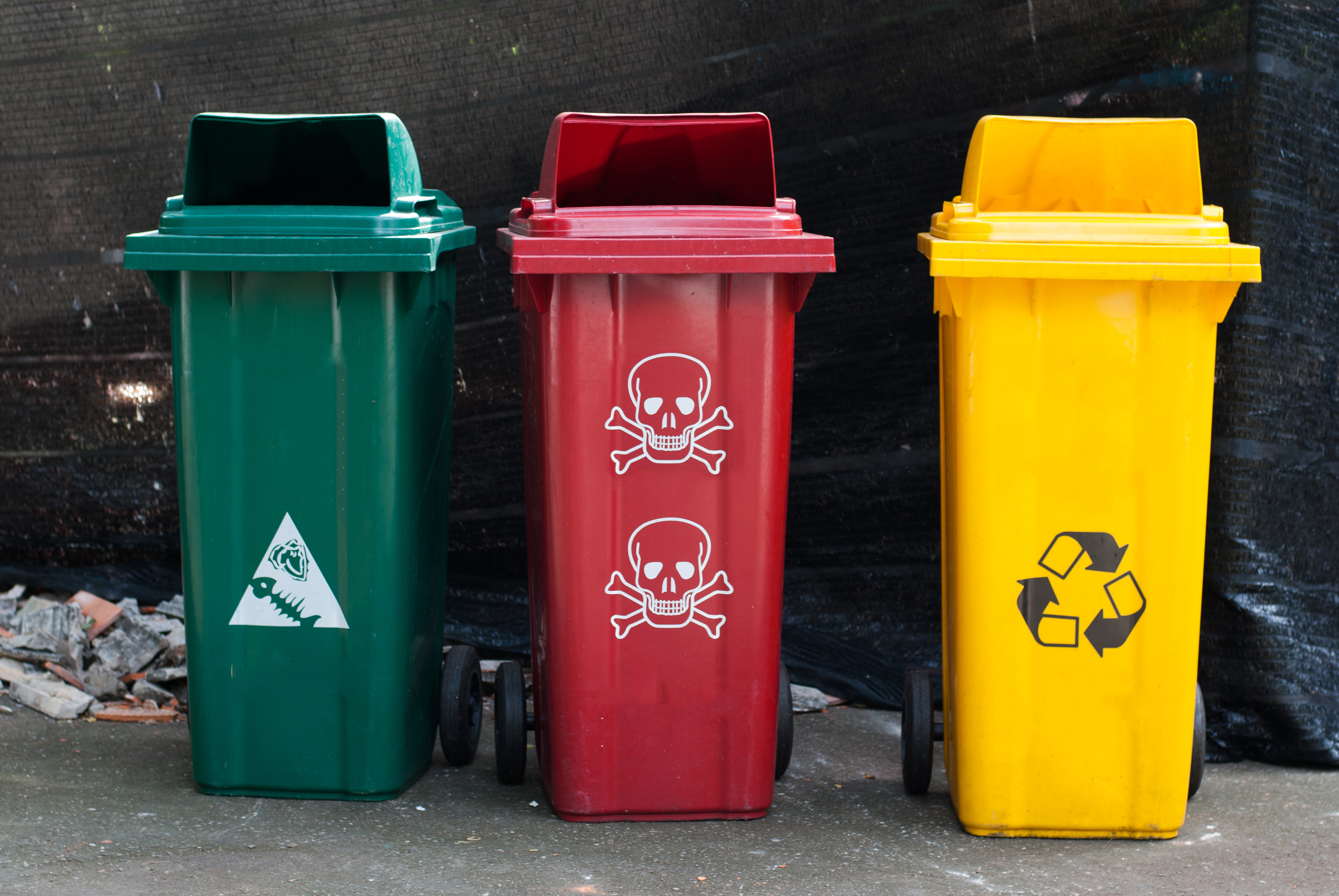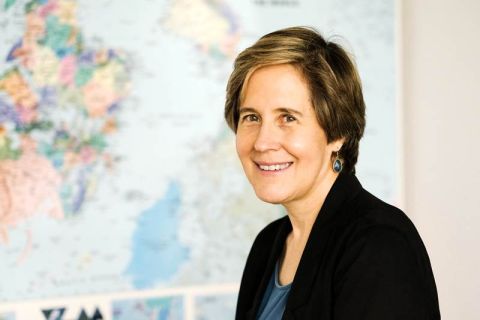
Back to Research@SMU Issue 45
By David Turner
SMU Office of Research & Tech Transfer – How much information will persuade people to change their behaviour? This question has long plagued budget-minded public servants, as well as puzzled citizens as they find yet more educational leaflets in their mailboxes.
But now there is hope of a precise answer, thanks to researchers from the Singapore Management University (SMU) School of Information Systems (SIS) and their explorations of hazardous waste disposal records in the US state of California.
The research team has been digging through a decade’s worth of waste and communications related data to understand more about household informedness: the degree to which households know enough to make utility-maximising decisions. For example, what do you need to tell people in order to stop them from using a toxic oven spray that will eventually find its way into the sea?
“Is passing a law enough? Passing a law and sending letters? Holding a town meeting?” asks project leader Robert Kauffman, Professor of Information Systems at SMU. Such options are what civil servants around the world have to ponder about, whether they are regulating waste or designing price-based behaviour incentives such as Singapore’s Electronic Road Pricing (ERP) system.
Fresh insights from recycled data
Changing people’s hazardous waste use and disposal habits has long been the task of the California’s public recycling authority, CalRecycle. Fortunately, CalRecycle’s records have also been recycled, in a manner of speaking. “The agency’s efforts are all on the public record, creating a rich vein of data for studying household informedness,” explains Professor Kauffman.
Using data such as waste collection records, grant projects, drinking water compliance reports and census data, the SMU research team studied how CalRecycle’s information campaigns – whether via television, radio, mail-outs or billboard – correlated with changes in hazardous waste disposal habits in 38 Californian counties.
“Access to this data overcame the impracticality of asking households how their hazardous waste awareness and habits changed over time,” says Ms Kustini Lim-Wavde, a PhD student at SMU SIS.
“We could determine the extent to which CalRecycle’s efforts directly affected recycling and proper disposal of specific materials, such as asbestos, acids, oxidisers, and recyclable electronics and precious metals,” she explains.
Along with the expected findings that public education reduces hazardous waste use and encourages recycling, this finely ground data also led to some surprises. “We found that if we dug deeper into the data and looked at different materials – electric waste, fluorescent waste, oil and paint, for example – the effect was quite different for each one,” says Ms Lim-Wavde.
The key difference: the knowledge that safer substitutes were available. When CalRecycle told households about alternatives to hazardous kitchen cleaners, those households expelled less of the dangerous substances. Statistical modeling helped the researchers conclude that this was because people had found substitutes, rather than stopped disposing of the original hazardous material, adds Ms Lim-Wavde.
Another significant finding was what Professor Kauffman calls “the hazardous waste version of showing news of high speed car crashes.” Like drivers decelerating after seeing a crash, people improved their hazardous waste management after receiving direct mail about violations of environmental quality laws and prosecutions for polluting water with hazardous waste, he says.
Putting a value on household informedness
But perhaps most unexpectedly, the econometrics used to analyse the data led the team to a potentially far-reaching discovery: the new concept of household informedness elasticity.
In economics, elasticity refers to the extent to which changing prices affect consumers’ demand for products and services. But in household informedness elasticity, information is the currency, and the equation tells public agencies the amount needed to persuade citizens to change their behaviour.
“Economists have long found ways to put values on everything from traffic flows to human life, and this has helped to justify laws such as compulsory seat belts in cars,” says Professor Kauffman. “But this is the first time researchers have been able to put a value on household informedness that could help authorities justify spending on public information campaigns.”
The team didn’t expect to come up with this new construct, recounts Professor Kauffman, explaining that they began by looking at patterns in the public records and how they changed over the research period. “With a deeper understanding we could then ask deeper analytical questions, such as whether household informedness matters,” he says.
The researchers published their findings in a May 2017 paper in Resources, Conservation and Recycling, titled ‘Household informedness and policy analytics for the collection and recycling of household hazardous waste in California’. The paper was co-authored with Professor Greg Dawson of Arizona State University’s School of Accountancy, who is also a senior scientist at the university’s Julie Ann Wrigley Global Institute of Sustainability.
Location, location, location
By separating Californian counties by geography – city, metropolis, rural or desert, for instance – the team was also able to examine geospatial differences in the performance of information campaigns. They found that the nature of the regional economy, and households’ relationship with it, significantly impacted how people responded to information.
“People in cities receive and share more information, and hear about environmental problems more quickly than people in the suburbs. But while city folk can get by without disposing of waste properly, people in suburban and rural areas are more sensitive to their environments, and so are more likely to respond,” says Ms Lim-Wavde.
Geospatial differences could influence the effects of waste policies or programmes, and hence also impact waste collection activities across the counties or regions, she explains.
“In less densely populated counties in Northern California where people have a relatively higher environmental awareness than people in the south, we detected clusters of higher hazardous waste collection activity. This could be a spill-over effect of their pro-environmental behaviour, or a result of collaboration,” suggests Ms Lim-Wavde, who plans to examine this further. In addition, she wants to evaluate the effectiveness of grants that CalRecycle gives to counties to improve waste disposal.
Better information, better decisions
As a passionate advocate of translating research into outcomes, Professor Kauffman believes that the notion of elasticity of informedness could be extremely helpful to public agencies not just for household waste-related decisions, but also in areas such as residential electricity and water use, as well as healthcare.
For her part, Ms Lim-Wavde is curious to explore how the conceptual framework derived from her waste research might be used in Asia, and particularly in Singapore.
“In Singapore, apart from electronic waste, household informedness about the dangers of hazardous waste is probably quite low, because we don’t see the impact on the environment of common items such as fluorescent lights, oil and paint,” she explains.
But she is quietly confident that her research has the potential to make a difference. “We want to be able to help provide better ways to measure household informedness in Asia as well,” she says.
Ms Lim-Wavde is also happy to be able to combine her passions for data analytics and sustainability in a way that has real impact. “It’s very satisfying to be able to measure impacts more accurately and in a way that helps policy-makers make decisions about cost and effectiveness, rather than just relying on good intentions or rules of thumb,” she says.
Back to Research@SMU Issue 45
See More News
Want to see more of SMU Research?
Sign up for Research@SMU e-newslettter to know more about our research and research-related events!
If you would like to remove yourself from all our mailing list, please visit https://eservices.smu.edu.sg/internet/DNC/Default.aspx
